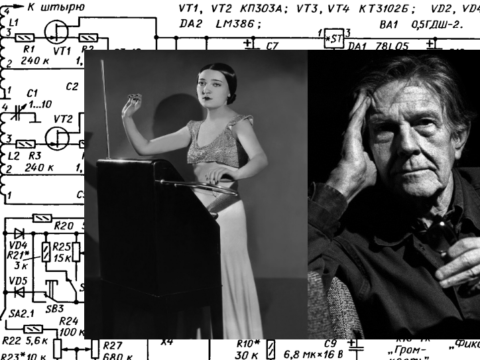Recent Posts
Christmas Thereminology
Christmas Thereminology festival!
New concerto for theremin and orchestra!
The first concerto for solo theremin and symphony orchestra was created for Lev Theremin by composer Joseph Schillinger, in 1929. Since then, several concertos for theremin and orchestra have appeared. In 2017, the St. Petersburg composer Anton Tanonov wrote a…
Thorwald Jorgensen – short interview for Theremin Today
We have taken a short interview for you with a wonderful Dutch thereminist, participant of the Theremin Today festival and Theremin Today project, Thorwald Jorgensen Dear Thorwald, please tell us about your upcoming concert plans? Concerts for the next few…
Gregoire Blanc – short interview for Theremin Today
A short interview with the leading French thereminist Gregoire Blanc for Theremin Today Dear Gregoire, how your concert life is developing, what are your plans? First of all, I would like to thank you for this spontaneous little interview! It…
THEREMINOLOGY FESTIVAL – PART 1
The festival will be attended by members of St. Petersburg Theremin Society, Russian Theremin School, finalists of Theremin Star competition and guests of the festival – thereminists from different countries of the world. Merry Christmas! Happy New Year! Continuation of…
SPLENDID SONORITY AND VIVID EXPRESSIVENESS”: THE THEREMIN BEFORE SCI-FI
BY KELLY HISER Most people who haven’t heard of the theremin have heard it, usually in old science fiction movies like The Day the Earth Stood Still (or spoofs like Mars Attacks). The instrument has a reputation as an oddball, by virtue of its unusual method…
Renaissance and Evolution by Masami Takeuchi – the new album from Japanese Theremin School
A few days ago, a new album was released – Renaissance and Evolution by the Japanese Theremin School and Mandarin Electron president, Masami Takeuchi. The disc includes compositions by M. Glinka, V. Vavilov, M. Ravel, and other composers. A solo…
Clara Rockmore “the only country in which I could freely give concerts is USSR”
One hundred ten years ago, on March 9, 1911, Clara Reisenberg (married name Rockmore) was born. Сlara was born with extraordinary musical talent. At three years old, Clara’s uncle gave her a small quarter-violin; when Сlara was five years old,…
THEREMINOLOGY FESTIVAL ONLINE – PART 1
In this year Thereminology festival is dedicated to the centenary of russian theremin and to Lev Theremin, genius and innovator The Thereminology festival will be attended by over 60 thereminists – members of the St. Petersburg Theremin Society, finalists of…
THEREMINOLOGY FESTIVAL ONLINE – PART 2
In this year Thereminology festival is dedicated to the centenary of russian theremin and to Lev Theremin, genius and innovator The Thereminology festival will be attended by over 60 thereminists – members of the St. Petersburg Theremin Society, finalists of…








